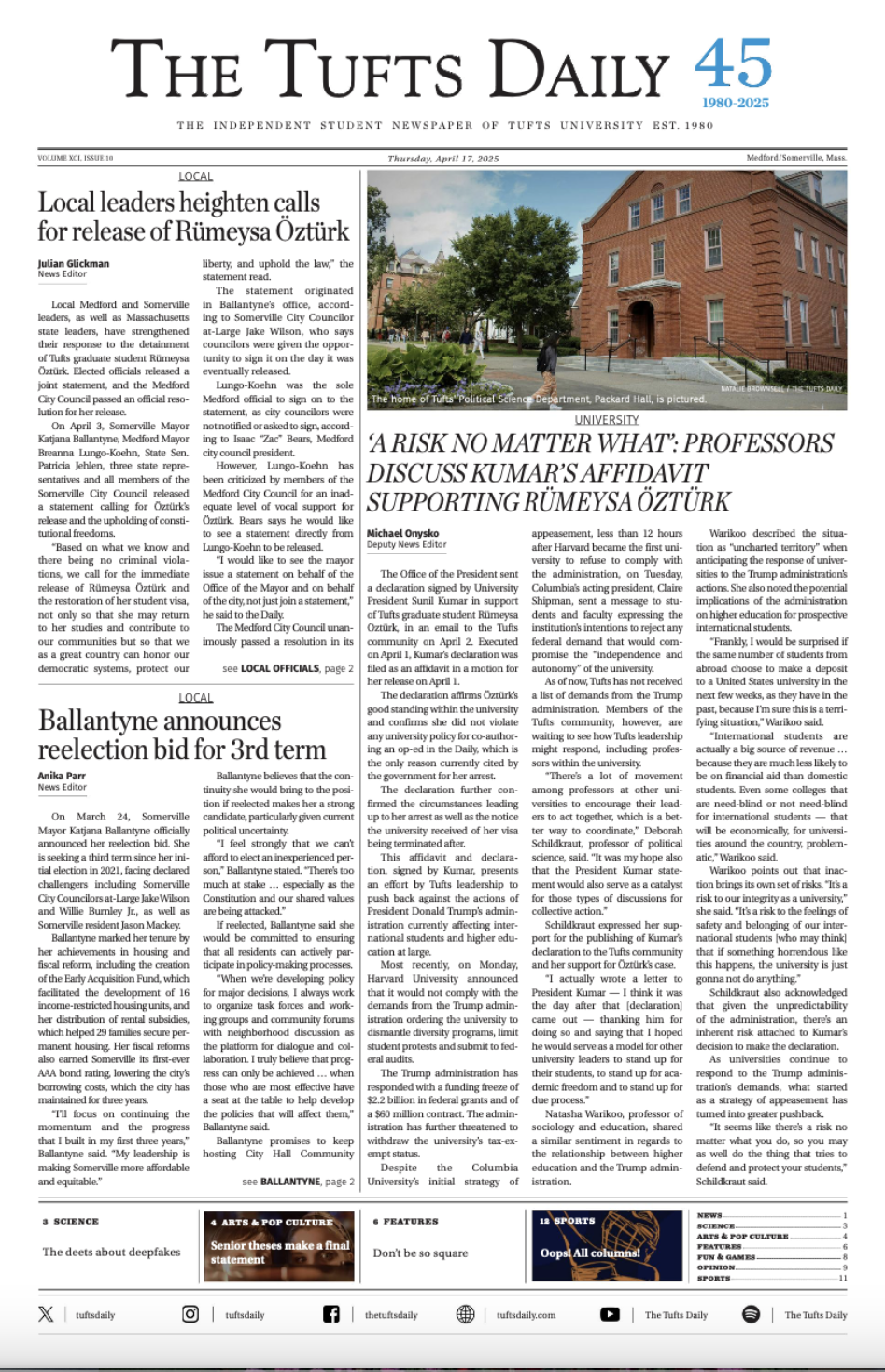Tiered housing is a hot topic on campus; that’s not news to anyone at Tufts. Before Tufts adopted the system this past fall, it had been widely criticized by organizations like the Tufts Housing League as inherently unjust. Since the policy’s adoption, it has been written about, debated and discussed.Just two weeks ago, the Daily called for Tufts to return to a flat housing rate. Tufts’ tiered housing system should indeed be abolished in favor of a flat housing rate for all class years. However, if the Office of Residential Life and Living is to accurately call this system “tiered,” the housing cost variations should not just be higher for more desirable living situations; costs should also be lower for forced, less desirable living situations for first-years.
It’s no secret that several first-years are living in forced triples. Starting in 2017, Tufts initiated what it calls bed optimization in response to Tufts’s long-standing housing crisis. Residential Life began to add more beds to existing on-campus housing as an inexpensive way to increase on-campus living capacity.LDa, the architecture firm contracted by Tufts to complete this project, was responsible for “furniture upgrades required to convert large singles to doubles and large doubles to triples,” according to LDa’s website. But many of these “large singles” and “large doubles” are not so large after all. For example, the “large doubles” converted into triples in Hodgdon Hall are much smaller than the existing doubles in Hill Hall, meaning that more students are living in tighter quarters.
As it stands, all first-years pay the same amount for housing: $8,220. No matter what residence halls students live in or how many students are in each room, all first-years pay the same rate. In contrast, under the new tiered housing system, housing rates for sophomores, juniors and seniors vary based on one’s residence hall and number of roommates. Based on the perceived desirability of their living situations, these students pay anywhere from $8,220 to $10,219 for on-campus housing. If students pay more for more desirable housing, it should follow that students pay less for less desirable housing.
Theoretically, it makes sense that all first-years pay the same rate for their residence halls. First-years do not choose where they live on campus or with whom, so no student should be required to pay more to live in a more recently renovated residence hall — like Houston Hall or Bush Hall — or to live with fewer roommates. However, first-years also do not choose to live in forced triples. Still, many do.
No first-year assigned to a more desirable living situation should be penalized with a higher housing rate, but first-years assigned to less desirable living situations should also not be penalized by paying the same rate as their peers in more desirable housing accommodations. If housing prices increase with desirability for upperclassmen, so too should they decrease with “bed-optimized” living situations for first-years. Tufts tiered housing can’t have it both ways: the pyramid that goes up must also come down.
Funding Our Future: The Tufts pyramid scheme






